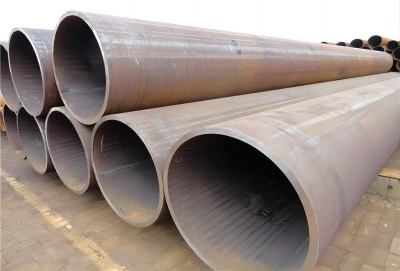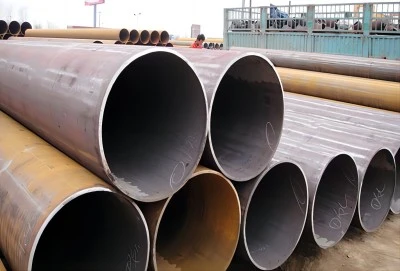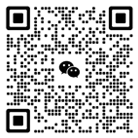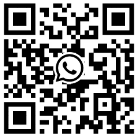Double seam welded pipes are crucial components in various industries, from oil and gas to construction and infrastructure. To ensure their reliability and performance, these pipes undergo rigorous testing procedures. In this article, we'll explore the various tests conducted on double seam pipes, the quality control measures in place, and the importance of non-destructive testing in verifying weld integrity.
|
|
|
Quality Control Measures for Double Seam Welded Pipes
The production of double seam welded pipes involves a series of quality control measures to ensure their reliability and performance. These measures begin with the selection of high-quality raw materials and continue throughout the manufacturing process.
One of the primary quality control measures is the careful inspection of the steel plates or coils used to create the pipes. This inspection includes checking for surface defects, dimensional accuracy, and material composition. Any irregularities detected at this stage can be addressed before the welding process begins, saving time and resources.
During the welding process itself, several quality control measures are implemented. These include:
- Continuous monitoring of welding parameters such as current, voltage, and wire feed speed
- Visual inspection of the weld seams by trained operators
- Regular calibration and maintenance of welding equipment
- Strict adherence to welding procedures and standards
After the welding process, the pipes undergo a series of tests and inspections to verify their quality. These tests include both non-destructive and destructive methods, which we'll explore in more detail in the following sections.
Non-Destructive Testing (NDT) for Weld Integrity Verification
Non-destructive testing (NDT) plays a crucial role in verifying the integrity of welds in double seam welded pipes. These testing methods allow for the inspection of the pipes without causing any damage, ensuring that the pipes remain intact and ready for use after testing.
Several NDT methods are commonly used for double seam welded pipes:
- Radiographic Testing (RT): This method uses X-rays or gamma rays to create images of the weld interior. It can detect internal defects such as porosity, inclusions, and lack of fusion. RT is particularly effective for thick-walled pipes and can provide a permanent record of the weld quality.
- Ultrasonic Testing (UT): UT uses high-frequency sound waves to detect defects in the weld and pipe wall. It's especially useful for detecting laminations, cracks, and wall thickness variations. Advanced techniques like phased array UT can provide even more detailed information about weld quality.
- Magnetic Particle Inspection (MPI): This method is used to detect surface and near-surface defects in ferromagnetic materials. It's particularly effective for finding cracks and other linear defects that might not be visible to the naked eye.
- Eddy Current Testing: This technique is used to detect surface and near-surface defects, as well as to measure the thickness of non-conductive coatings on conductive metals. It's particularly useful for inspecting heat-affected zones around welds.
Each of these NDT methods has its strengths and is often used in combination to provide a comprehensive assessment of weld integrity. The choice of NDT method depends on factors such as the pipe material, wall thickness, and specific quality requirements of the project.
Mechanical Tests for Assessing Double Seam Welded Pipe Strength
In addition to non-destructive testing, double seam welded pipes also undergo a series of mechanical tests to assess their strength and performance under various conditions. These tests are crucial for ensuring that the pipes can withstand the pressures and stresses they'll encounter in real-world applications.
Some of the key mechanical tests performed on double seam welded pipes include:
- Hydrostatic Pressure Test: This test involves filling the pipe with water and pressurizing it to a level above its designed operating pressure. It helps verify the pipe's ability to withstand internal pressure without leaking or failing. The test pressure and duration are typically specified by industry standards or customer requirements.
- Tensile Test: Samples are cut from the pipe and subjected to a tensile test to determine properties such as yield strength, tensile strength, and elongation. This test helps ensure that the pipe material and weld meet the required mechanical properties.
- Flattening Test: In this test, a section of the pipe is flattened between two parallel plates. The test assesses the ductility of the pipe material and the quality of the weld. A high-quality pipe should be able to withstand significant flattening without cracking or breaking.
- Bend Test: This test involves bending a section of the pipe to a specified angle. It helps evaluate the ductility of the pipe material and the quality of the weld. A good weld should be able to withstand the bending without cracking or showing other signs of failure.
- Impact Test: Also known as the Charpy V-notch test, this involves striking a notched specimen with a pendulum hammer. It measures the amount of energy absorbed during fracture, providing information about the material's toughness and its ability to resist brittle fracture.
These mechanical tests, combined with the non-destructive testing methods discussed earlier, provide a comprehensive assessment of the quality and reliability of double seam welded pipes. They help ensure that the pipes meet the stringent requirements of various industries and can perform safely and effectively in their intended applications.
Contact Longma
The rigorous testing procedures applied to double seam pipes are essential for ensuring their quality, reliability, and safety in various applications. From non-destructive testing methods that verify weld integrity without damaging the pipe, to mechanical tests that assess strength and performance under different conditions, each step in the testing process plays a crucial role in maintaining the high standards expected of these critical components.
At Longma Group, we understand the importance of these testing procedures and adhere to the highest standards in our manufacturing processes. Our commitment to quality ensures that our pipes meet and exceed industry requirements, providing our customers with products they can rely on for their most demanding applications.
If you're looking for high-quality double seam welded pipes that have undergone rigorous testing and quality control measures, we invite you to reach out to us. Our team of experts is ready to assist you with your specific needs and requirements. Contact us today at info@longma-group.com to learn more about our products and how we can support your projects with our superior pipes.














